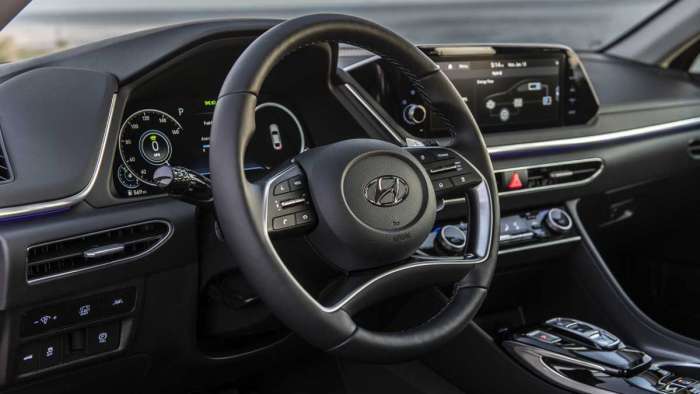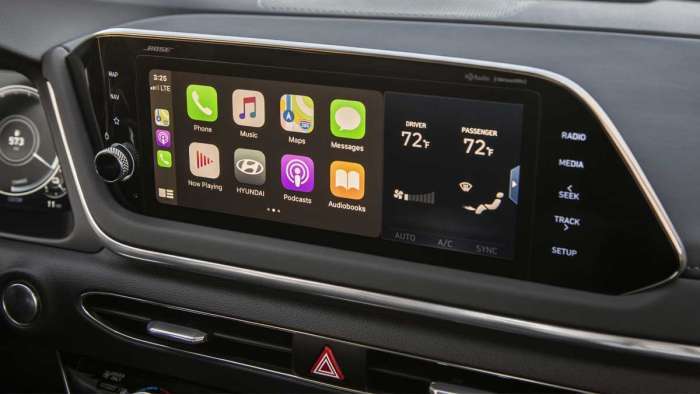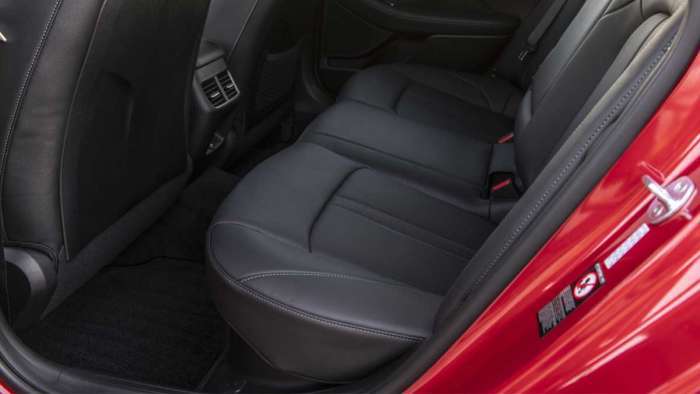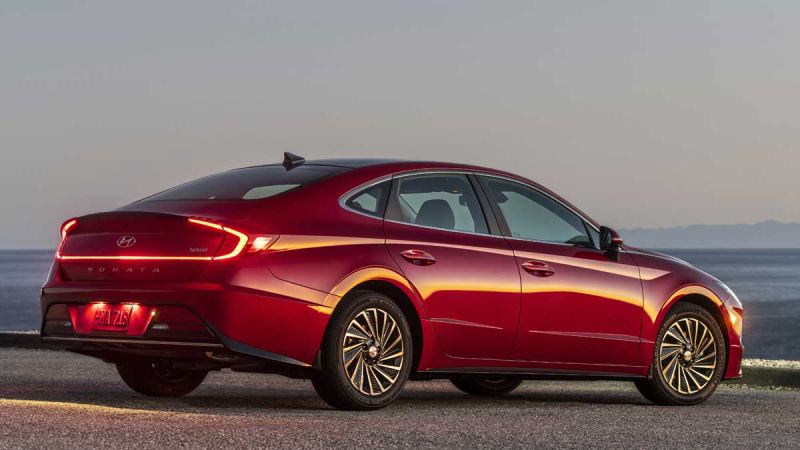When Hyundai released the brand new fully redesigned 2020 Sonata, it certainly rocked a bold look. On the road, it was turning heads like an exotic. In a world of copycatting and bland SUVs, this was a breath of fresh air.
I did a full video review on the 2020 Hyundai Sonata Hybrid and was thoroughly impressed with how quiet, comfortable, and smooth it was. Other Hyundai models portray these characteristics; however, despite being a hybrid, there was no strangeness in driving the Sonata. The car had a very smooth drivetrain, which never raised any red flags. You hardly felt the transition between the engine cutting on and off.
These are all fantastic traits; however, we were most impressed with the full Solar panel roof Hyundai offered for the Sonata hybrids. There have been cars in the past that tried to take advantage of a Solar roof like the Karma and Nissan Leaf but, we think Hyundai did it right as far as mainstream cars go.
Instead of using a little patch on the roof as a solar panel, the whole roof is a Solar Panel with the Sonata Hybrid. Hyundai touts on their press site their solar roof system gives you an extra 2 miles of range per day on average, so about 700 miles of range per year. The new Sonata is one of the few cars you might not want to keep in the garage.
Other advantages of the solar roof include charging the 12-volt battery, which helps prevent discharge if the car is off, and you're listening to music or having the HVAC running. These are the smart and intuitive things that were missing in the practical family car segment. We continuously see bigger grills and bigger infotainment screens in new cars, which this has, but tech used effectively to benefit consumers is a great thing.
Now, keep in mind that the gasoline-powered 2020 Sonatas do not receive the same solar panel treatment as the hybrid counterpart. And if you like sunroofs, you might be disappointed to see that gone in the hybrid trims due to the solar panel taking up the entire roof. Not having a sunroof does improve the headroom in the new Sonata, and Hyundai does claim that the new Sonata has class-leading space for the front occupants.

As mentioned before, we love how ingenious this solar panel feature is but, the cost of replacing this unit if damage were to occur would be presumably high. Even if insurance or some other party/warranty were to cover the costs of damage, there is no guarantee that whoever is in charge of replacing the solar panel unit will do as good of a job as Hyundai from the factory. The Solar Panel is the roof of the car and is responsible for much of the car's structural integrity, but we can't argue with the practical benefits of this design choice.
There are three trim choices for the 2020 Hyundai Sonata Hybrid, a base model Blue trim starting at $27,750, a mid-level SEL trim starting at $29,900, and the range-topping Limited trim which I test starting at $35,300. The base model Blue trim is the most efficient Hybrid Sonata getting an estimated 50 mpg city and 54 mpg highway. SEL and Limited trims still get a respectable 45 mpg city and 51 mpg highway. In my test with primarily aggressive city driving, I averaged about 43 mpg, which is not bad for having my foot to the floor.
The new 2020 Sonata Hybrid is not the fastest vehicle in the world. The 2.0l gasoline four-cylinder mated to the battery pack produces about 192 HP, and an undisclosed amount of torque, it is most likely over 200 LB. FT. because there is undoubtedly some potent thrust off the line, but power bottoms out when you wring it out. I am personally fine with this because the Sonata Hybrid is so smooth and quiet that I never need to drive aggressively in this car. There is a level of tranquility to the driving experience, and it lowers my blood pressure just being in it.

The exterior has gotten most of the hype, but the interior is also a pleasant place to be. Sure hard touch plastics are being used; however, the ergonomics and fit and finish are still top-notch in the Sonata. Infotainment has grown from an 8.4" touchscreen to a 10.25" touchscreen, and the gauge cluster is fully digital in the Limited trim I tested. Of course, Apple Carplay and Android Auto is standard across all Sonata trims. Black levels look great In this car, however, I don't think the new system is as easy to use as previous generations but is still one of the best infotainment systems you can get in a car at this price.

I like how the climate control continues to be separate from the screen, but I did notice some glare in harsh sunlight. The optional Bose audio system sounds great. The overall interior cabin felt solid and no creaks and rattles when going over rough bumps. There is a decent amount of space in the back for adults, but the Honda Accord is undoubtedly the largest in terms of rear leg space for the class. The new Sonata will still do it for most people, and the trunk is very generous with a spare tire to boot.

It's great to see Hyundai continually improving its cars while maintaining a low cost of entry for everyday consumers looking to finance or lease these cars. Although the midsize car segment is not as popular as it once was, it is great to see how Hyundai installs smart features like a solar panel roof and an abundance of flair to the design.
Kevin Meyn is an automotive journalist for Torque News concentrating on Hyundai content. Kevin is the founder of Exhaust Sports Auto Youtube channel, where he does professional car reviews on new and used vehicles. Through the use of various resources and extended Automotive expertise, Kevin documents the latest in automotive news revolving around Hyundai. Kevin graduated from NC State University studying Supply Chain Management but has had a passion for cars since he was a child. Follow Kevin on Twitter and Instagram @exhaustsports.











